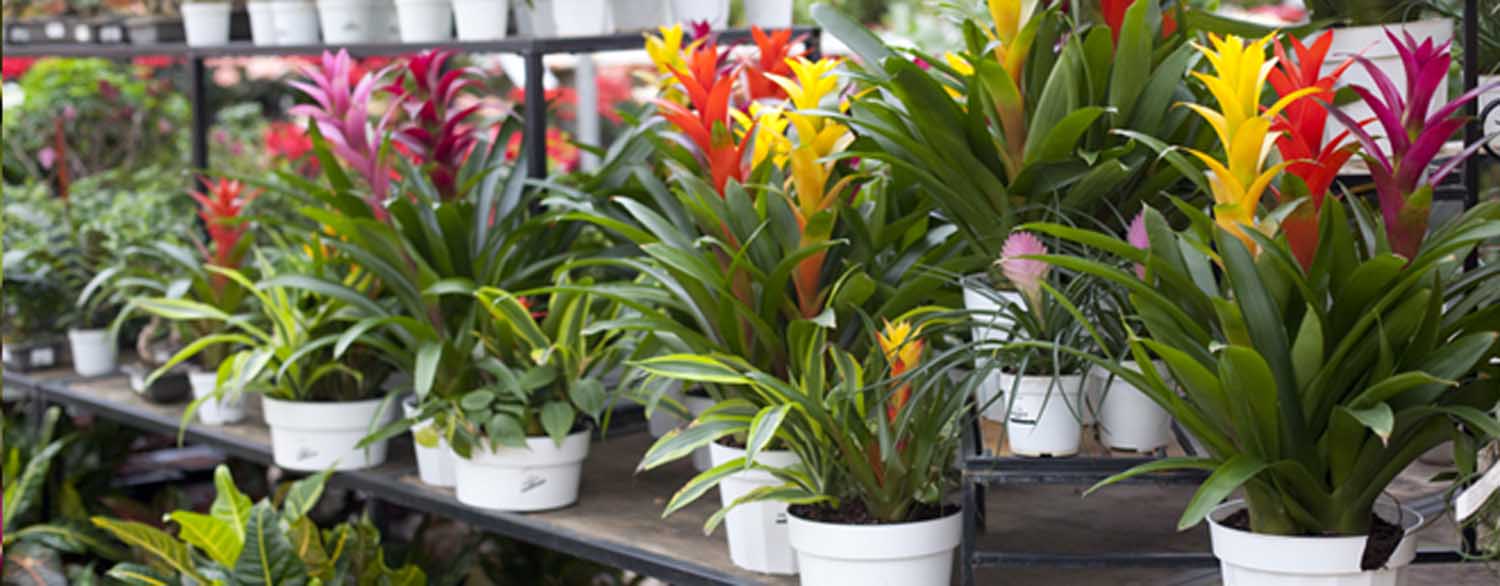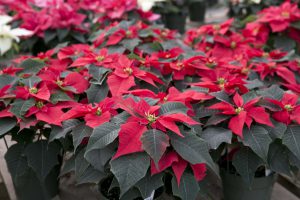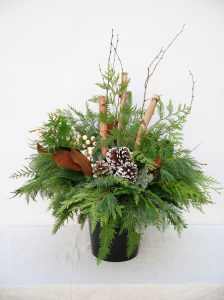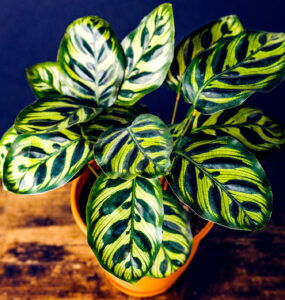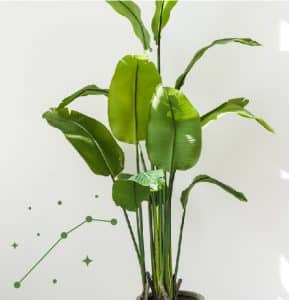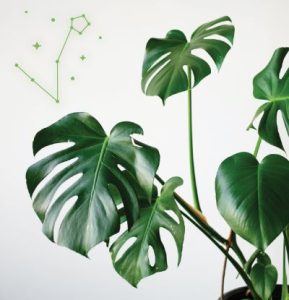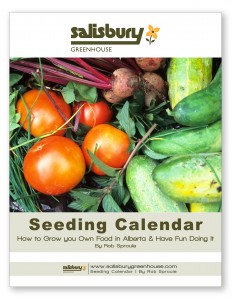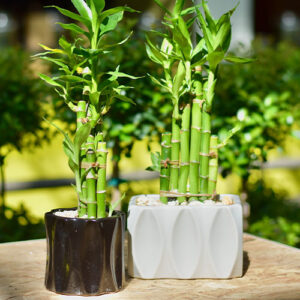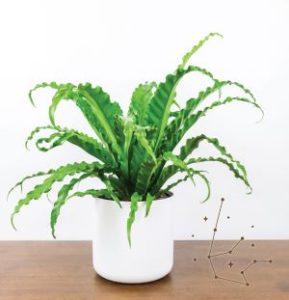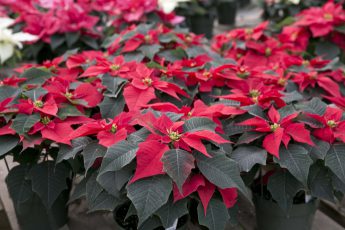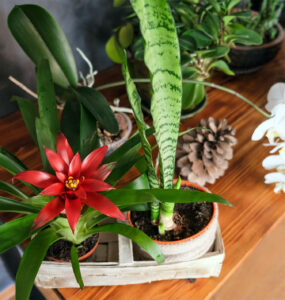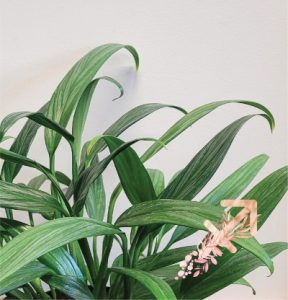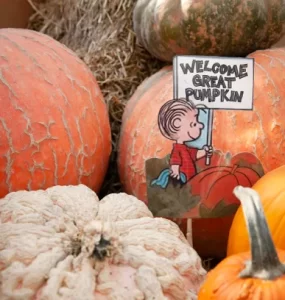Caring for your Bromeliad
by Rob Sproule
Even if you don’t know the term ‘bromeliad’, you’ll know the plant. We’ve all seen the glossy, strappy leafed plant with its neon inflorescence towering from the center. While technically the plant is a Guzmania, a genus within the larger Bromeliad family, most people refer to it simply as a bromeliad or “Scarlet Star”.
What are Bromeliads?
Bromeliads are a 2700 species strong family hailing exclusively from New World tropics where they cluster on crowded tree branches from Florida to Chile (one species thrives in Western Africa but it was probably inadvertently introduced).
The first recorded mention of a Bromeliad was on Christopher Columbus’s second voyage, when he tasted a sweet fruit cultivated by the Caribe Natives. He took it home and before long pineapple was the latest upper, upper class European craze. It was even noted to be growing at Versailles around 1700.
The popular houseplant version (Guzmania ligulata) was pulled from the South American jungle by its namesake Anastatsio Guzman in 1776. Guzmania was the second Bromeliad species to be identified but many others had to wait until the 20th century; undoubtedly there are scores more new to science clinging to hardwoods in deep Amazon valleys.
Caring for your Bromeliad
Guzmania are native to the steamy jungles of Costa Rica and Columbia; they capital T-tropical. Avoid direct sunlight, which will burn them, and opt instead for either bright or dim indirect light.
We’re often taught to water soil and not foliage. With Scarlet Stars, forget that lesson. Always pour into the central cup and let the water overflow into the pot, keeping the soil moist but not soggy. Dump the cup weekly and replace, especially if you’re using tap and not distilled water, to avoid salt build up.
Bromeliads take moisture and nutrients in through their leaves via uniquely adapted pores. In the jungle, they grow high in the canopy and some sofa-sized species carry gallons of water in their central reservoirs, sometimes breaking massive branches with their weight.
They become eco-systems to themselves, with tree frog species leaving their tadpoles in them to mature in the relative safety that height provides and feed on smaller critters within. The resident fauna returns the favour by providing waste, which acts a rare jungle fertilizer.
If you like a cozy house, this is your plant. Guzmania thrive in the steamy lowland luxury of temps between 18-27 degrees C. Much cooler than that and they can develop root rot, so keep clear of chilly drafts.
They can’t have too much humidity. A pebble tray underneath them is ideal, as are frequent mister bottle spritzes. For a treat, set them on the bathroom sink when you have a shower; they’ll enjoy the warm steam even more than you.
When it’s finished blooming
Scarlet Stars don’t bloom like other plants. The neon inflorescence rising from the center isn’t the flower; the flowers are white, hidden amongst the stiff folds of the central rosette, and usually come and go unnoticed.
The central spike will hold it’s colour for an impressive 2-4 months, depending on conditions. To make sure you’re buying a fresh plant, check the base for “pups” (tiny versions of the mother plant) growing out the side; avoid if you see them as it means the inflorescence is almost finished.
Once the inflorescence is fades it won’t bloom again. Instead, the pups will continue to grow and will bloom themselves in about 3 years.
Reblooming them is a good activity for the very, very patient. Once the pup is 1/3 to 1/2 the size of the mother plant, carefully cut it off and plant it.
Wait a year or 2 and, once it reaches blooming size, stick it in a clear plastic bag with chopped apples for a week (I’m not making this up). The apples release ethylene gas which, in a curious twist of botanical chemistry, induces blooming.

